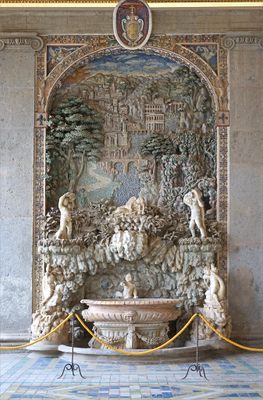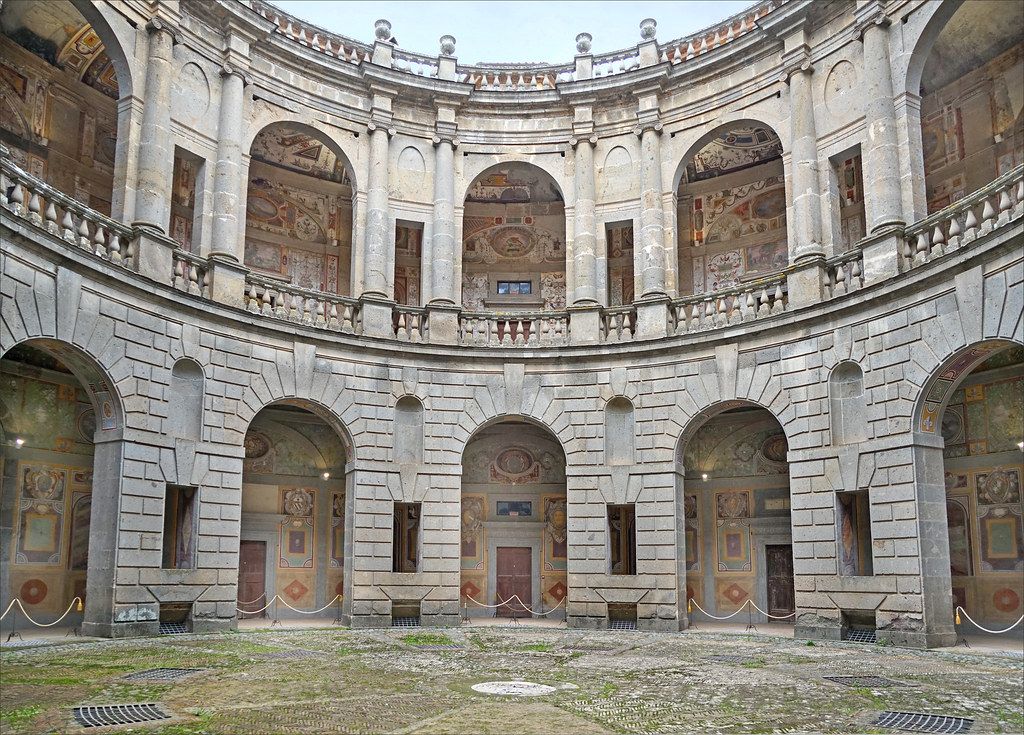About
The extraordinary Villa Farnese is one of the most impressive examples of 16th-century architecture in Lazio. It's nestled within the slopes of the forested Cimini Mountains, near Vico Lake.
The project was initiated by then-Cardinal Alessandro Farnese, from the powerful Farnese family, in 1504. He later became Pope Paul III and employed two of the age's greatest architects: Antonio da Sangallo the Younger and Baldassare Peruzzi. The Pope's grandson, the eponymous Alessandro Farnese, also a cardinal, commissioned the construction of the site in the second half of the 16th century to another great architect of the age, Giacomo Barozzi da Vignola.
In this second phase, the pentagonal plan was preserved, but the inner court was modified from a pentagonal plan to a circular one, and the residence changed its outlook from a defensive fortress to an aristocratic mansion to which Alessandro Farnese the Younger could retire in times in which his family was no longer popular at the court of Paul IV.
Caprarola was also modified. As a result, and a straight road (nowadays via Filippo Nicolai) cuts across the town and leads straight to the Villa's entrance with its two staircases.
Over the course of the following 20 years, Farnese commissioned a number of artists to paint the rooms with an extraordinary and seemingly infinite collection of frescoes, which are still one of the Villa's major highlights. These artists included the Zuccari brothers, Jacopo Zanguidi and Giovanni Antonio da Varese, and the themes were most likely inspired by the great poet Annibale Caro, a friend of Farnese.
The rooms are named after the iconography which is vividly depicted on the walls and ceilings. The most significant rooms include the Room of the Farnese Deeds, the Room of the World Map (with very detailed maps of the world as it was known in the 1570s) and the Room of Hercules (with its panoramic loggia and its grotto-like fountain). Hercules plays a significant role in the region's mythology as the nearby Lake of Vico was believed to have been formed by the god's myth, a scene also depicted in one of the frescoes.
The first floor, also known as Piano Nobile, hosts the most important rooms out of the building's five floors and is separated in two symmetrical apartments with distinct seasonal roles. To reach the Piano Nobile, Vignola designed several spiral staircases, the most impressive of which, with frescoes by Antonio Tempesta, is known as the Scala Regia. The Scala Regia was inspired by Bramante's staircase at Pope Julius II's Casino di Belvedere and it could be ascended by a mule or a small horse.
Drawbridges from the apartments on the Piano Nobile lead to the impressive gardens, the first part of which included a theatre in a grotto, and past, the chestnut woods, the architects designed the Giardino Segreto (or Secret Garden) with its summerhouse, also known as the Casino. Stairs lead to the Casino and are separated by a cascading flow that emerges from the statues of the River Gods above. Below the Casino, a maze-like garden is surrounded by giant Herms (all designed differently) and cypress trees. Between the Casino and the upper gate which leads into the chestnut forest, there lies a rose garden.
Among the Villa's many curiosities and mysteries, don't forget to try the special sound effect in the Room of Angels!
Related Tags
Know Before You Go
Villa Farnese can be visited from Tuesday to Sunday (8.30 AM to 7.30 PM). The gardens are open from Tuesday to Saturday (8.30 AM to one hour before dusk). Nearby you can visit the ancient beech forest on Monte Cimino, the old town of Ronciglione, Vico Lake and the town of San Martino al Cimino.
Flavors of Italy: Roman Carbonara, Florentine Steak & Venetian Cocktails
Savor local cuisine across Rome, Florence & Venice.
Book NowPublished
September 16, 2019





































